Welcome back to Trilogy of Terror, a series in which I take an in-depth look at three related horror films in the run-up to Halloween. This is the first installment in our trilogy; the second will go live October 24, and the third on Halloween itself.
The films I feature in Trilogy of Terror could be films in the same series, films by the same director, films with a common theme, or films with any relationship, really. This year I’m covering Christian horror. Which, evidently, exists.
Part of the reason I chose this theme was that I wanted to watch Harmless.
Okay, let me take that back, because that’s a lie, and we know where liars go. What I wanted to watch was “that movie about the haunted box of pornography.” That’s all I remembered…that unforgettable and thoroughly ridiculous concept for a film that really, truly couldn’t be anything short of hilarious in execution.
For a while, this movie seemed to be everywhere. Sites I frequented were writing about it and friends were sharing the trailer on Facebook. It looked like a riot. It was, so far as I could tell, a found-footage horror film about a man whose family is terrorized by the monster he let loose in their lives…which hitched a ride, apparently, in a box full of pornographic magazines.
I couldn’t remember its title, and I didn’t even know if it had come out…but I knew I’d seen the trailer making the rounds years ago, and surely it couldn’t take that long to make.
And, to be fair, while I had no faith (haha) in the film being good, it wasn’t necessarily doomed from the outset. Yes, it would be low budget. Yes, it would be preachy. Yes, it would be overacted.
But pornography addiction is a very real thing. It’s an actual problem, like any addiction is. And there could possibly be some twisted mileage to get out of turning it into a horror film, with the demon of addiction personified. In fact, the more I think about it, the more I can imagine it working. It would need to be self-aware and at least periodically humorous, but I can see the concept being conducive to exploring addiction — and the way it can tear families apart — in a memorable and interesting way.
After all, isn’t fighting addiction a lot like fighting demons? (The answer is “yes” because that’s exactly the idiom people use to describe that situation.) A movie can bring a demon to life and force the characters (and us) to look it in the eye. The fact that a spiritual filmmaker might see that demon as real and a secular one might see it as a useful metaphor is a big difference, but that shouldn’t in itself dictate how believable or enjoyable the film is.
Unfortunately, it looks like Harmless was never actually made. The trailer lives on, but evidently Rich Praytor — the film’s director — shot footage just for this purpose. They weren’t clips from a film he was making, but rather proofs of concept. I have to give him credit for that. It was a labor of love, and he edited this trailer hoping people would buy in.
I mean that literally. Harmless was a Kickstarter project that failed to meet its paltry goal of $12,500. It pulled in just under $600 in pledges before Praytor saw the writing on the wall and cancelled the campaign.
Of course, as someone who has his own failed Kickstarter behind him, I don’t see that as a specific reason for mockery. Praytor had an idea and he asked the world if it was interested. The world collectively replied, “Nah,” and he moved on with his life. All in all, that’s admirable.
That was in 2012, and as much as I scoured the internet in the hopes that Harmless eventually materialized in some other form, I found nothing. There are sites (including IMDB) that claim it was released, but there’s no evidence of it, the Kickstarter was cancelled, and there are other sources that indeed say the film never happened. The world is poorer for it.
And yet, in 2014, another Richard Praytor film appeared. This one was called The Lock In. And it was a found-footage horror film about teens who are terrorized by the monster they let loose in their lives…which hitched a ride, apparently, in a pornographic magazine.
Harmless may have died, but its spirit rose again in The Lock In. And thus we have this year’s Trilogy of Terror.
Unless it’s relevant to the film — or my reading thereof — I wouldn’t usually bring up outside details of a director’s life. But in this case, looking for Harmless, I came across a lot of information about Praytor. Not as a filmmaker, but as a stand-up comedian. You can watch the nearest thing to a highlight reel here. To his credit, he received an endorsement of his talents from Jerry Jenkins, co-author of the Left Behind series. To his larger discredit, the Left Behind series is by no means known for its quality and completely lacks a sense of humor, so these words of praise are exactly as relevant to his craft as they would be coming from his local butcher.
I’m mentioning this because…well, Christian entertainers gonna entertain Christians. I get it. But what was this tepid, family-friendly chuckle-slinger doing investing himself into two different horror movie projects? If Praytor’s gift is comedy, and that’s the talent he’s honed for over a decade now, and what he uses to speak what he considers to be the language of Christ, then why wasn’t he making comedy films instead? Especially as the premise of a spooky porno book would have to work far less hard to succeed as farce than it would as horror?
I honestly have no idea, and I’m baffled. Praytor’s comedy in that compilation isn’t the sort of thing that appeals to me directly, but there’s clearly room for it. I don’t find it especially smart or clever, but I can’t imagine there are many church-appropriate stand-up comedians jostling for the space he occupies. I’d be willing to believe he’s filling a niche. But having watched The Lock In, I’d be unwilling to believe it was directed by anyone with a single funny bone in his body.
The Lock In is terrible, but that’s not its crime. Many movies are terrible and yet compulsively, deliriously watchable. Mystery Science Theater 3000 launched a widespread appreciation of cheesy movies, and the genuine financial success of things like The Room and Sharknado proves that people don’t always need a movie to be good before they’ll devote their time to it…they just need to get some kind of pleasure out of it. Watching the wheels fall off an inept production does bring along with it a kind of thrill, and it’s one that sticks with us. We could watch hundreds of competent ballet performances, but we’re always going to remember the one in which the lead dancer tripped and fell over.
The Lock In, though, is neither competent nor is it humorously awful. It’s just a bad movie. It’s one that does nothing right, but also fails to do anything wrong in any interesting ways. It’s the kind of movie that might have been made by somebody who spent a few hours reading about what movies were, but had never actually seen one.
Praytor doesn’t seem to know enough about film to even attempt anything interesting, and so nothing in the film is. And when the central threat of your film is a pornography ghost, that’s both a real problem and a big missed opportunity.
The plot is simple enough. (Beware of spoilers for a movie you’ve never heard of and which isn’t available for purchase anywhere.)
On their way to a church lock-in, three friends stop to clean out their car. Justin is the one holding the camera, Nick is the nice one who has a crush on a girl named Jessica, and Blake is a prankster. Blake finds a dirty magazine in a dumpster, and thinks it would be funny to smuggle it into church.
He does, and strange things start happening, such as a garbage can falling over, and somebody off camera turning on a faucet. All of the other lock-in participants vanish, leaving the three teenaged idiots to be mildly inconvenienced in the least inventive ways imaginable. At one point they find another of the participants, but then she vanishes again, so there was really no point. The kids scream a lot, and eventually Praytor hits the 90-minute mark and the film ends.
If that sounds impressively unfun for a movie about a pornography demon, that’s because it is. At every opportunity, Praytor chooses the least interesting way forward. But he does — stopped clock that he is — hit upon a strong concept for the film’s presentation right out of the gate. It’s not original, but it’s appropriate, and it sets the film into a kind of identifiable logic that, sadly, falls apart the longer you look at it.
It begins with what should be a brief interview of Chris, a former youth pastor. I say it should be brief because it actually runs to nearly five minutes, which is a Hell of a long time for a character we don’t know to speak dead-eyed to the camera before the movie even starts.
Chris mentions that footage exists of the lock-in that made him resign from his position as youth pastor, and they’ve edited it down to just the highlights so that the church elders could see what happened. Then there’s a static title card that says:
The following footage is intended for review only by the church board. Any duplication or reproduction is strictly prohibited.
That’s good. It tells us immediately what kind of film we’re going to see (found footage), it explains why this footage happens to be the same length as a movie (it was edited to give a specific audience a beat-by-beat overview of what happened), and it makes us feel as though we’re going to see something important (we’re breaking the strict prohibition by not being a church elder / member of the church board).
That single slide does a lot of work setting the film into motion. Sadly, it’s about the only thing that works, but Praytor at least plays into the kinds of things you can do with the concept. By allowing some unknown editor within the world of his film to “edit” what we’re seeing, we aren’t subject to an hour and a half of unbroken footage directly from the perspective of Justin’s camcorder.
Instead, this was assembled after the fact, with the ostensible goal of providing as full a view of that night’s events as possible, Praytor lets his phantom editor splice in security camera footage, Chris’s interview, and, at one point, footage from a separate recording that has nothing to do with the lock-in but does provide further insight into what’s happening.
That’s all fine. In theory.
In practice, these aspects all fall short. The spliced-in separate recording (which we’ll discuss in greater detail later) doesn’t offer as much insight (or horror) as Praytor thinks it does. The security camera footage could provide a valuable outsider’s perspective, but all it really shows us is a second angle of kids walking down hallways. And nearly all of the film — and certainly all of the important moments — are seen through Justin’s camcorder anyway, usually in extraordinarily (and unwisely) long scenes that positively cry out for editing.
The fact that Chris opens the film telling us it has been edited to just the most important information becomes an unintentional retroactive joke; if you’re editing this down to show the elders that a pornography ghost stomped around their church when nobody was looking, why didn’t we cut out the long scenes of the kids waiting for each other to get ready, making small talk with parents, and sitting at traffic lights?
Admittedly, those are the things that can help with world building in film, particularly at the beginning, when audiences are still getting their bearings. But this footage doesn’t need to build a world; it occupies the same world as the elders who are meant to be viewing it. They know these places, know these people, and know these issues. All they have to see is what happened. Introducing this film as a piece of evidence for church investigation is smart, but incompatible with the actual content of the film.
Praytor seems to want to have it both ways. The scary Blair Witch Project / Paranormal Activity hybrid that traces a tragedy as it unfolds, and a believably mundane buddy film about three youngsters who meddle with things they shouldn’t. But the two approaches are at odds; The Lock In explicitly claims to be one thing, and then relentlessly positions itself as the other.
It’s strange, and the fact that there’s a didactic core to the film that insists viewers never look at pornography at any point in their lives doesn’t do it any favors. It can’t be too scary, because a wide audience needs to see this and be cautioned against the scourge of women who expose their nipples. The boys can’t be too realistic, because teenage boys curse and make crass jokes and do other family-inappropriate things. The Lock In works so hard to make sure it can appeal to everyone that it appeals to precisely no-one.
That’s a gap that all overtly Christian movies struggle to cross. (No pun intended.) Horror movies can’t be too scary, comedies can’t be irreverent, and tragic tales can only be so tragic. These are films pitched directly to the choir, which has always amused me. They aim to teach, but they’re written for those who are already taught. The final product has to be clean and acceptable enough to those who have already learned the lesson, preventing the lesson from reaching the wider audience that actually needs to hear it.
But…who needs to hear it?
In the case of The Lock In, I’m not entirely sure. People who like pornography, I guess. Or at least people who don’t actively hate it so much that they’ll dedicate months of their lives to making a film to convince others that they should hate it, too.
Which is…an odd lesson. If you are going to reach sinners and convince them not to sin, why is this specific sin the one you’re cautioning them against? Why a modern-day parable about the importance of masturbating less? A good number of the Ten Commandments are still pressing concerns for society…do we really need to focus on a deep-cut lesson like this that Jesus himself couldn’t have cared less about?
Once again, though, pornography addiction is a serious problem for those who struggle with it. But I’d argue — with confidence — that the problem is the “addiction” half of that phrase, and not the “pornography” one. Addiction to anything is inherently bad. Even relatively benign addictions sap us of our focus, our money, our time, and drive wedges between us and the people we love. Then, of course, you get into addictions to drugs and alcohol, which additionally sap us of our health and our lives. Further, addictive behaviors involving violence or non-consensual sex acts add direct consequences for others, beyond the addicted individual.
Addiction is absolutely a problem for many people. There’s certainly a scale upon which addictions can be ranked from bad to worse, but addiction to anything should be addressed.
The problem is that The Lock In isn’t about the evils of pornography addiction…it’s about the evils of pornography.
The kids with the dirty magazine don’t struggle with addiction. They just find some pictures of ladies with staples through their stomachs and barely look at any of it. Blake hides it in Nick’s bag as a joke. Nick’s crush Jessica finds it when riffling through his bag for cookies. They immediately get rid of it.
That’s not addiction.
And while the slippery slope possibility is in play — and largely born out by the separate footage we’ll discuss shortly — I don’t buy it. Yes, addiction often has roots in behavior that seems frivolous. It’s just a cigarette. One more beer won’t hurt. Yeah, I’ll pop a pill…everyone else is popping them and they seem fine.
But here, the kids don’t even demonstrate an interest in the magazine. And that’s the interference from the choir again. For these three modern-day Onans to show interest in pornography would be…well, that would be unseemly. And if we want to show this in church, or watch it with grandma, we can’t have that. So even if the kids are meant to represent the first stage of addiction, it doesn’t work. This is even sillier than a movie that shows alcoholism starting with one sip of wine…this is a movie that shows alcoholism starting with an accidental glimpse of the liquor aisle in a supermarket.
In fact, we don’t even get a glimpse of the pornography here, which breaks the reality significantly. Early in the film, the ‘Baters Three find the haunted pornography in a dumpster. Justin, the documentarian, films Blake and Nick as they look at it, but he never attempts to get into an angle that shows the material. Granted, I don’t expect a Christian film to include clear shots of Hustler spreads, but why is Justin filming anything if he’s not even interested in showing his subject?
Instead we see Blake and Nick poring over the magazine and making necessarily vague comments about it. (“Nice little magazine,” says one, referring to the pornography. “They don’t make them like that anymore,” replies the other, referring to the great advances in vagina manufacturing that had been made since the pornography was published.)
But Justin never shows us what it is, which is odd for someone who is meant to be documenting the experience. It’s like someone making a nature documentary by filming some scientists talking about their findings without ever turning the camera slightly so that they could actually film the findings. It goes against every creative and human impulse, and it makes the film feel unnatural. That’s a problem that’s even worse for found-footage films, when the entire thing relies on a feeling of worrying familiarity.
Of course, we could assume that Justin is a bit prudish himself, and wouldn’t want to personally see — let alone film — a dirty magazine. But we know this isn’t true, because at the very beginning and the very end of the movie, we see that he possesses pornography of his own. (Quite why he filmed himself flipping through skinmags at the start of the same tape he’d use to film the lock-in is beyond me.)
The fact that we don’t even get context for what the magazine contains, specifically, means it could be a Victoria’s Secret catalog for all we know. Which is a shame, because periodically The Lock In does bump up against some legitimate concerns.
For instance, Pastor Chris — upon discovering the magazine in the church — chides the boys for looking at something that degrades women, and there’s an actual discussion to be had there. The film doesn’t have it, but people are entitled to that opinion. I personally don’t have an issue with pornography as long as the participants know what they’re doing, are willing to do it, and have the right to say no at any point. If that’s how somebody chooses to makes his or her living, so be it. But I can understand the perspective of somebody who thinks it’s inherently demeaning. I don’t agree, but I understand, and they have every right to express their concern.
The fact that we don’t know what the magazine contains, though, works against that concern. Are we talking about some truly appalling smut? Or are we talking about the lingerie section of a Target flier? I keep referring to the magazine as pornographic, and that’s clearly the film’s intention as well, but its actual nature is never revealed. Pastor Chris could either be making a fair point about being respectful enough of other humans to look away from their bad choices, or he could be a Helen Lovejoy, howling with dismay that somebody modeled a swimsuit.
We don’t know, and without knowing, it’s difficult to invest. There’s clearly a vast spectrum between those two extremes, and without defining the specific point on that spectrum Pastor Chris and the Three Jacks are referring to, we can’t share in either their response or their concern. The underpants catalog can’t be met with the same degree of indignation as the snuff film. So where do we start reacting? Where do we start pushing back? To what degree do we fight to keep it out of our lives?
Whatever the nature of the porn, the kids have to speak with Pastor Chris. He lectures them for a while about how looking at these things is like driving to somebody’s house and spying on his wife through the window, which is objectively wrong in every possible way.
Then he teaches them a lesson by rolling it and making them smoke every last bit of pornography.
Frankly, I think Harmless was the smarter idea for a film. It still would have been terrible, but I can see it making some kind of point. The demon that terrorizes that protagonist’s family could function as a metaphor for the way pornography addiction could (figuratively) tear his family apart. The Lock In doesn’t have those kinds of consequences at its core. Nobody’s in danger, aside from the kids who broke the rules in the first place.
With Harmless, you’d have a family of innocents paying for the sins of the father. The stakes are naturally higher, because they don’t deserve whatever evil or turmoil the patriarch brought into their home. On some default level, you want him to atone for what he’s done and for everyone else to make it out unscathed. Here, in The Lock In, once things go wrong, literally everyone else is whisked away somewhere safe. The three boys are left alone in the church, and anyone who isn’t involved is sealed away somewhere so the bad things can’t get them.
That’s a serious miscalculation. Without innocence, there is no horror. There’s nothing at stake. The kids who walked into the meat grinder get ground into meat. That isn’t scary…that’s just a process.
Of course, this opens up a further discussion of its own: horror films are often morality tales, which you’d think would lead them to fit quite well with a didactic, Christian approach.
But innocence is relative. In a horror film, a character may be killed because he or she is guilty of a number of infractions. Having sex, disturbing a spirit, or even just walking into a room they were told not to enter. A knife comes down, fake blood spurts up, and we’re on to our next victim. The specific morality changes from film to film (and from villain to villain), but nearly always the punishment comes as a direct result of something the victims did. The killer didn’t like that they did it, and so he or she exacts revenge.
Rarely, though, will those in the audience agree with the killer’s sense of morality. I’m having trouble thinking of an example of a horror film in which the audience is morally aligned with the killer’s perspective. We may well agree that the teenagers shouldn’t have snuck into the woods to have sex. We may well agree that the shifty guy shouldn’t have stolen the idol. We may well agree that the moron shouldn’t have gone into the basement. But in each case, the brutal reprisal is likely far beyond what we would consider fair. These characters aren’t chided for their perceived misdeeds; they’re decapitated, disemboweled, flayed alive.
The horror lies in that moral gulf. If the punishments were fair, they wouldn’t be scary. They’d be just.
Therefore it’s important that however the villain’s moral compass is calibrated, it’s not in alignment with a representative member of the audience. If it were, well…they wouldn’t be a villain. (And even less would they be a monster.)
Do you see the discrepancy? In a Christian film — one which operates under the rule of the Christian God — we don’t have a crazed man in a hockey mask. We have The Lord Above. There’s still a moral code by which the characters are judged and punished, but those punishments can’t be unjust, because they’re meted out by God Almighty.
The Christian God is fair, the Christian God is loving, and the Christian God forgives. If the Christian God punishes you, it’s because you deserve punishment. Exactly that punishment. There’s no room for discussion, because the Christian God is perfect. When Jason hacks you apart, you don’t deserve it. When God does it, you definitively do.
As with the meat grinder, it’s just a process. Horror films nearly always feature a psychopathic presence or force carving its way through people who don’t deserve to die. God — from the perspective of a Christian director and Christian audience — can’t possibly be viewed through that lens. That’s not what He is, and a film meant to bring others to Him can’t — and by no means should — portray Him as a crazed, vindictive killer.
Which means that there is no innocence here. The sinners get exactly the punishment in line with the degree of their sin. That’s not my personal opinion or reading of the film; that’s what it has to be, because the punishment comes directly from God. It must be right. It must be fair. Therefore it must not be horror.
It’s interesting, the fact that two kinds of morality tales turn out to be entirely incompatible. I’d honestly have expected horror to be a fairly useful vehicle for proselytizing before The Lock In convinced me otherwise.
In fact, injecting the actual Christian God into the film — as opposed to, say, some undefined force of goodness — becomes more problematic the longer you think about it. Perhaps the most amusing wrinkle is that of Pastor Chris, whose interview at the beginning of the film occurs at some point after the night of the lock-in, and Chris talks about how shaken up he was by everything Justin captures on film.
Of course, those words turn out to reveal Chris as one hell of a wimp, as the scariest thing in the footage was a garbage can falling over. But before we get to any of that, Chris spells out the fact that what happened was so horrifying, so soul shattering, so disturbing that he had to retire from the church immediately.
Which is the sort of thing that would be fine in a normal horror film. A docent quits his job at a museum after a night of being tormented by ghosts. A gravedigger flees and becomes a shattered hobo after seeing a skeleton claw its way up from the ground. A nurse can no longer bring herself to work with sick people after barely living through a zombie epidemic.
Fine. Your life is one way. Secure, stable, and predictable. A night of terror throws everything out of whack, and you’re unable to find balance again. That’s okay. That’s human.
But it doesn’t work in a Christian film, with a pastor, because you don’t get to run from spiritual warfare. You are called and commanded to fight. That’s why it’s called spiritual warfare, and not a spiritual scuffle happening across the street that you should probably just ignore. It’s “Onward, Christian Soldiers,” not “Quick, Out the Back Door, While Satan’s Not Looking.”
The Christian God commands us to stand firm in the face of the devil. Of temptation. Of evil itself. Both testaments of the Bible are littered with the corpses of those who made the ultimate sacrifice for the sake of their faith. They were taunted. Tortured. Killed. They are presented not as fools for clinging to their faith even when it meant their lives, but as heroes. As martyrs. As examples to be followed. Instead, Pastor Chris followed the example laid out in this classic hymn: “When danger reared its ugly head / he bravely turned his tail and fled.”
I know he might have been afraid of dying, but that’s literally what you’re supposed to do for your faith. You can’t even make the argument that by surviving he is able to reach more people, because he stopped being a pastor!
Pastor Chris, from a narrative standpoint, is meant to frame what we’re about to see. He’s a much more easily shaken Rod Serling. Praytor needs him to be so frightened that he quit his job to sell insurance — and cut off all contact with the kids he used to mentor…the children who relied on him…including those who had nothing to do with what unfolded that night — because we in the audience need to grasp the severity of just what went down.
But, from a Christian standpoint, Pastor Chris doesn’t get to do that. He isn’t allowed to see the fiery eyes of the dark lord and flee for his life. He must fight. Must stare the devil down. Must protect his charges. That’s what he’s there for, specifically. Instead, we are left with the mental image of Pastor Chris scampering away to the tune of “Yakety Sax.”
Pastor Chris’s response means he can only function as a comic character, but this isn’t a comedy, and nothing is funny. It also means that he can’t be the wise and honest man of great integrity that the film needs him to be. If he is, then he was a shitty youth pastor. And if he’s not, then his film-opening cautions against what we are about to see are meaningless.
And, again, please remember that what he was shaken up about was footage of a trash can falling over.
I don’t mean to keep harping on that, but for a horror movie, in which a demon is awakened, in which teenagers ostensibly fend for their lives, in which evil itself is on the prowl, and which lasts an hour and a half, you’d expect something more to happen. You really would. And it doesn’t. It’s a movie about haunted pornography, and a trash can falling over is its moneyshot. If that’s not a missed opportunity, I don’t know what is.
In fairness to the film, other theoretically spooky things do happen. Everyone vanishing, for instance. Doors locking of their own accord. The church being thrust into literal darkness. Though Satan, terrified of being cited for yet another OSHA violation, makes sure to keep the fire exit signs lit.
But those things are more for atmosphere (darkness is scary) and logistics (there isn’t a movie if the kids can open a door and escape). In short, those aren’t the scares…they set the stage for scares to come.
And come they don’t.
A few attempts at scares are made, such as when the kids find an irrelevant little boy crouched alone in a room. They go up to him, he makes a demon face, and that’s that. He factors into nothing, let alone any conceivable theme in the film, and doesn’t have anything to do with what came before or what follows.
Strangely — but not surprisingly — the other scare pulls the exact same trick. This time it’s a man in some interview footage the kids find in Pastor Chris’s office. The man speaks about his addiction to pornography, and we get as close as we’ll ever get to the film addressing a real-world consequence of looking at too much porn. In fact, it almost sounds as though this guy is reciting the elevator pitch for Harmless. Might as well stick it somewhere, I guess.
The guy tells his sad tale of addiction and of a sense of creeping horror in his home that he feels while cranking one out to www.actualphotosoffemaleshoulders.com. At some point during the recording, Pastor Chris gets up and leaves the room. (Which seems to be his way of dealing with any spiritual struggle.) The guy makes his own demon face at the camera.
Boo!
It’s not scary — it’s pretty funny — but all the scene did was make me wonder why Pastor Chris filmed this to begin with. What’s he going to do with footage of a parishoner describing his sad masturbation sessions? It’s strange. And didn’t Pastor Chris look at the footage later and see the demon? I don’t get it. What was it for if not for reviewing later? The demon face wasn’t even an illusion that the kids saw; it was actually in Pastor Chris’s film, as evidenced by the fact that we don’t see it through Justin’s viewfinder…it’s spliced in from the original source.
At one point the boys find Jessica shrieking in a closet, which comes as some kind of relief to them, but then she gets abducted by an unseen pornography goblin, or something, and none of them bat an eye. In fact, they later perform some kind of strange puppet show with paper cups to amuse themselves (a cuppet show?), which certainly goes a long way toward convincing me they can’t possibly be in any danger at all. I wouldn’t put on a puppet show after finding out I lost a $20 bill, let alone after I saw my girlfriend get dragged screaming into Hell.
It’s easy to figure out that Jessica is there (“left behind,” to use a term I just invented) because she also touched the magazine. But that’s more than a little unfair. She pulled a paper bag out of Nick’s backpack because she thought there were snacks in there. The moment she noticed it contained pornography, she shrieked and reared back, as all soldiers of Christ are commanded to do. She even got on the phone to complain to some unrelated peer that a guy she knows has gazed upon a woman’s flesh.
So why is she being punished? That…doesn’t seem just. Does God (as viewed by Praytor) insist that you don’t gaze upon pornography with lust in your heart? Or does He insist that you don’t even accidentally touch it with the back of your hand? Poor Jessica.
The three boys are then picked off one by one, with the exception of Justin, who stumbles around alone for a while, and then finds himself back at the beginning of the night, as the lock-in begins. Everybody is safe and accounted for, Pastor Chris is giving the same little “don’t do anything I wouldn’t do” speech he gave at the start of the event, and nobody believes Justin when he starts describing the crazy things that happened.
Which in turn makes him regret that never thought to film the entire thing hey waitaminute…
Justin never gets the idea to grab Pastor Chris by the neck and say, “Look, Bozo,” and replay the footage — the evidence — that he’s literally holding in his hand. He doesn’t do anything with it.
Think about that. He has an actual, physical recording that proves beyond the shadow of a doubt that the God they are told to worship and the demons they are told to fear are real. He has proof. He can save every soul in that room just by pressing “play.” He can save every soul in the world by uploading this to the internet. Hell, at the very least, he can claim his one million dollars from The Amazing Randi.
At this point, Justin is an actual prophet. He should be coming down from the mountain with his hair white, preaching the word of God. He should be the modern-day Moses…one who’s actually in a better position, because he was allowed to bring his GoPro up Mount Sinai.
Instead he just shrugs and goes home, amazed nobody else remembers what happened.
And, again, this wasn’t an illusion; it did happen, which is why the footage is being submitted to the church elders and Pastor Chris is selling insurance out of the trunk of his car. This is real. God and Satan revealed themselves to Justin in turn, and allowed him to film their arm-wrestling match. Mere moments later, he rides silently in the back of his friend’s car, on the way home to throw out his pornography.
The ultimate cosmic truth was revealed to him, and him alone. He also has it documented. The fact that he uses this profound, urgent knowledge to give up wanking would be comical if The Lock In had any degree of self-awareness whatsoever. Instead it’s like a man developing super powers, but only using them to warm up his coffee.
The Lock In doesn’t just fail at making its point…I think it unmakes other points. It’s a damp squib when it should be a sensational blast. It’s a can’t-miss premise for a legendarily bad movie that misses the mark of fun entirely. It’s the anti-masturbation screed the world never needed, told through an illogical format and unwatchable clumsiness.
It’s difficult to fault the actors. They’re asked to scream and run in circles far more often than they’re asked to recite lines, and the lines they do recite are clearly not of their own making. (The teenagers all speak like what a 40-something Christian humorist assumes teenagers must speak like.) Their hearts aren’t in this, and I’m proud of them for that. They don’t even get credited in the film, and I’d be shocked if they got paid for it.
Whoever they are, I hope they make it to Heaven. The ridicule they’ll receive from their peers until the day they die for starring in Don’t Touch Willy: The Horror Movie is punishment enough.
Note: Due to the nature of this year’s theme, please keep comments relevant. Discussing the ways in which these films handle theology is appropriate, but bashing or preaching outside of that context is not. Let’s talk about what the films get wrong. Let’s talk about what I get wrong. Let’s not talk about what Christianity, or any religion, gets wrong. There are places to do that, but this is a place where I say bad words at movies.

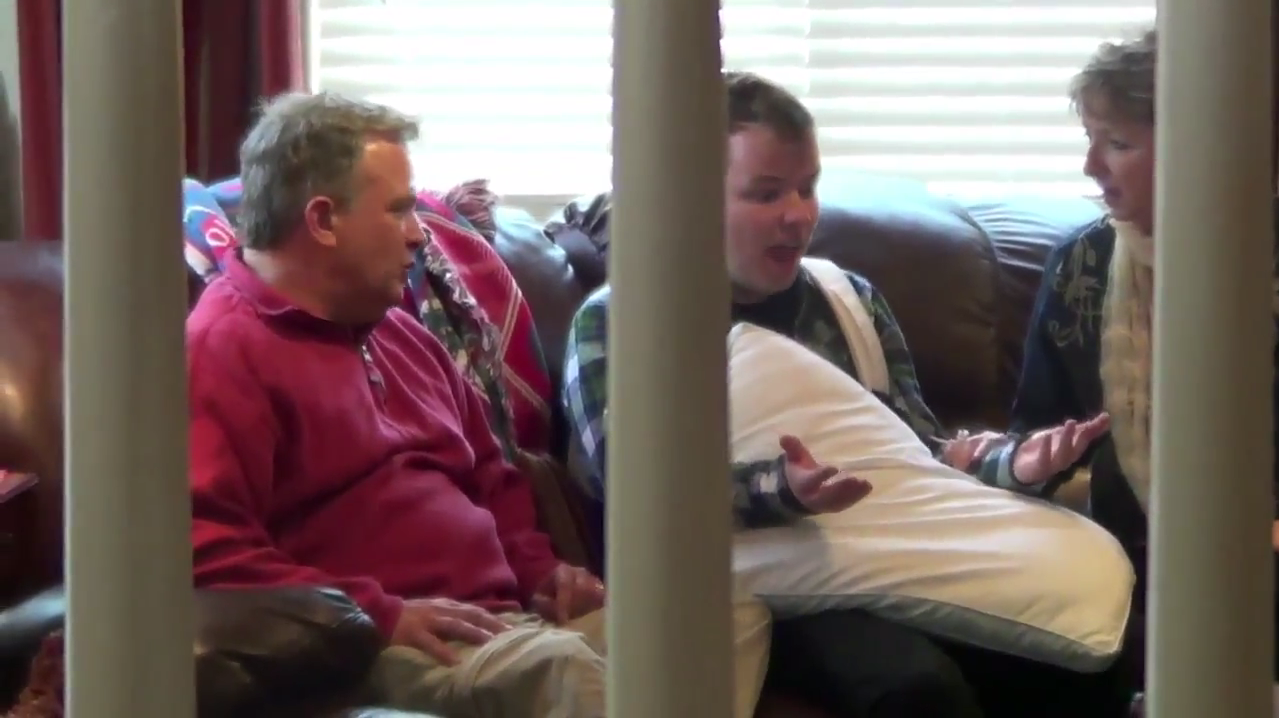
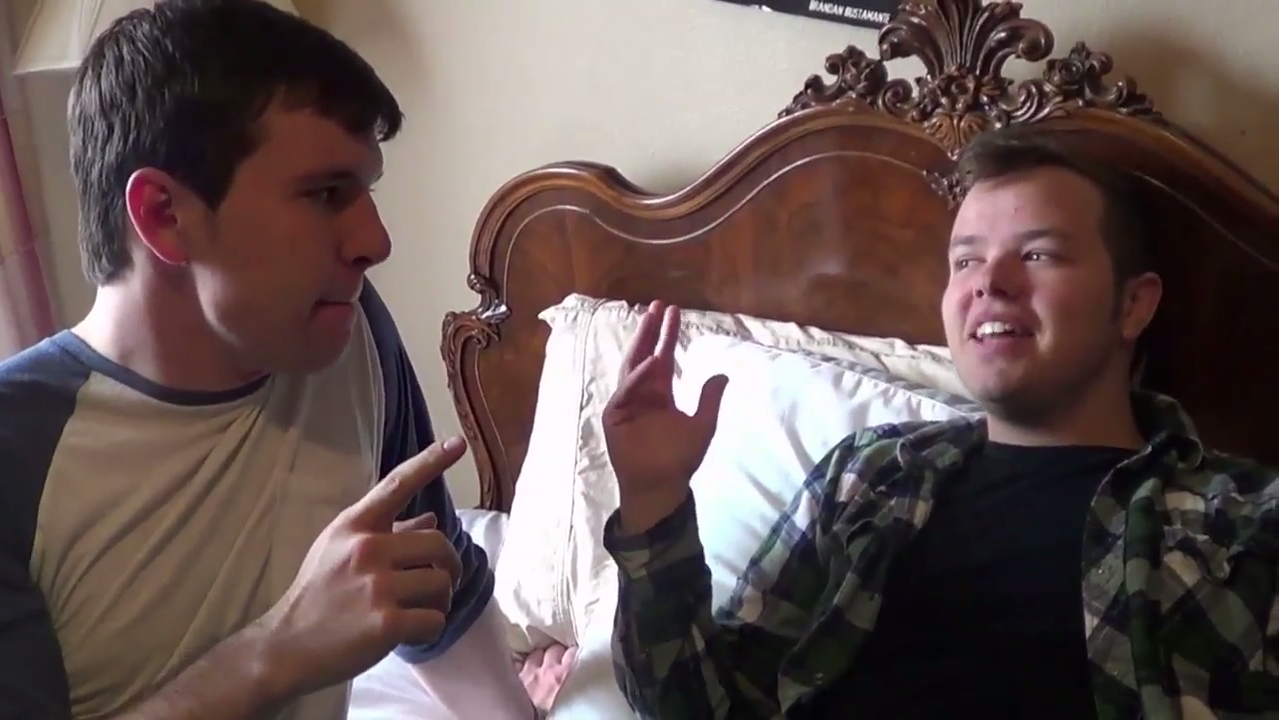
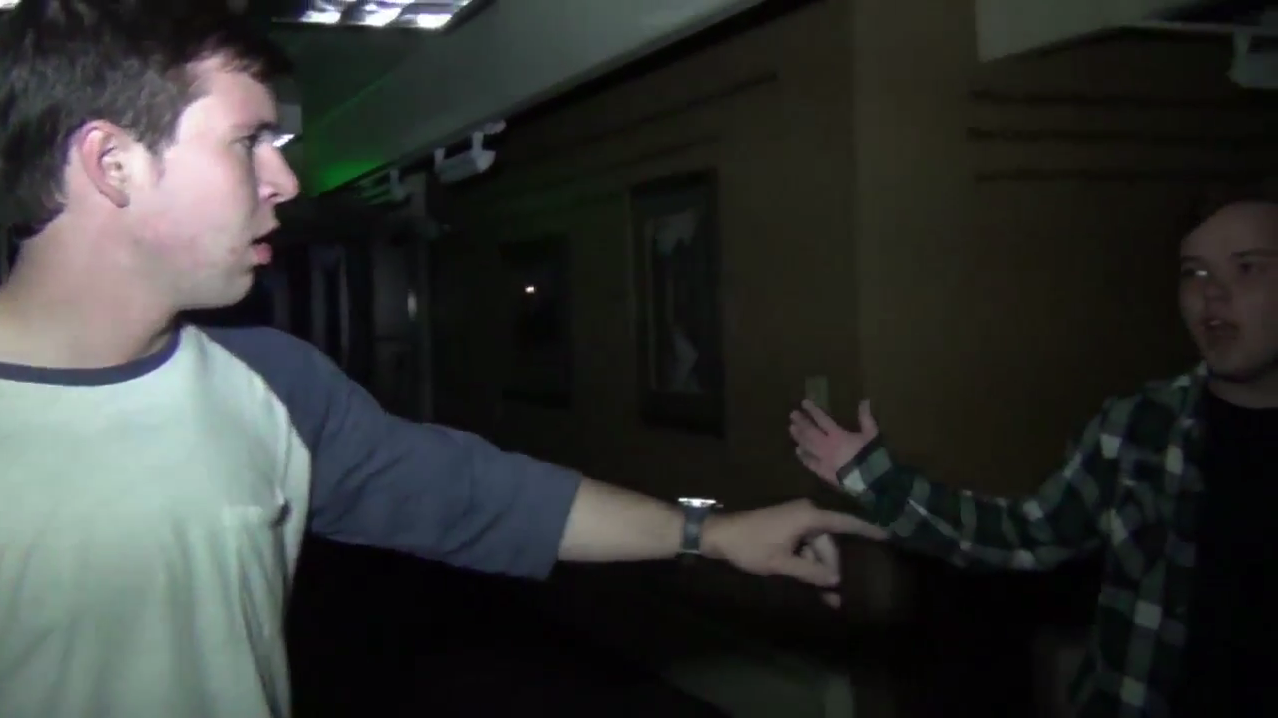


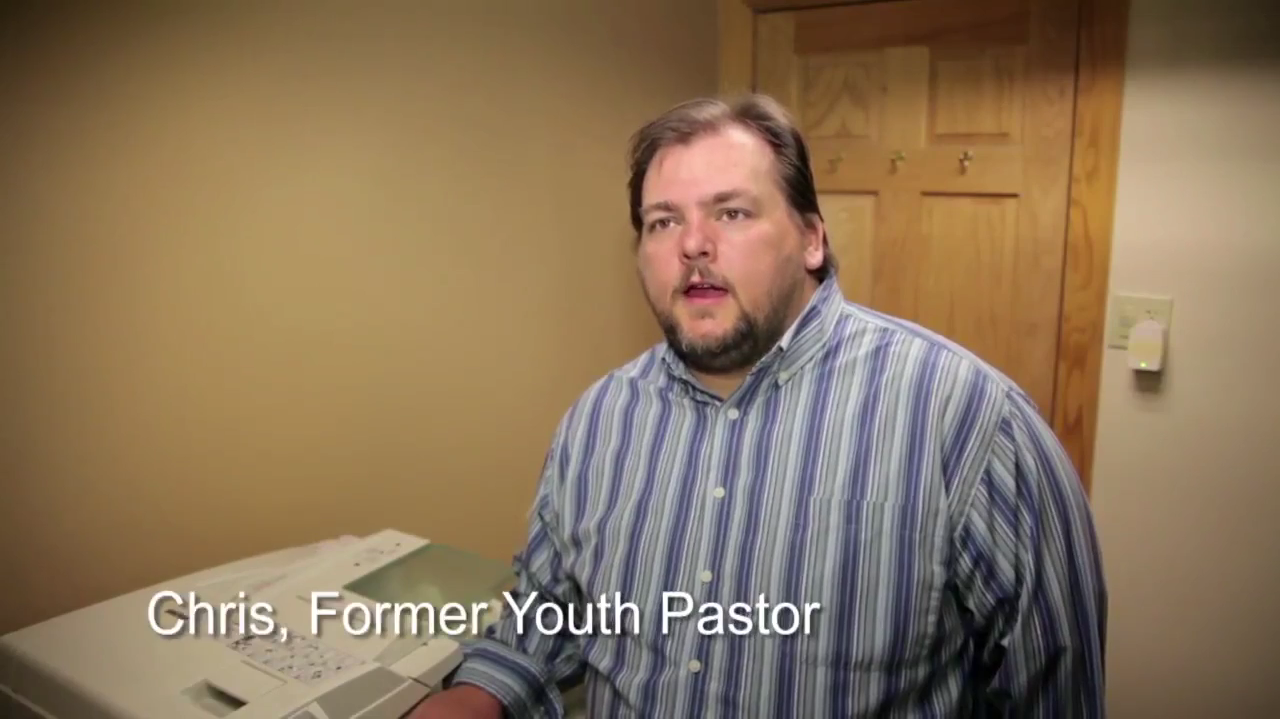
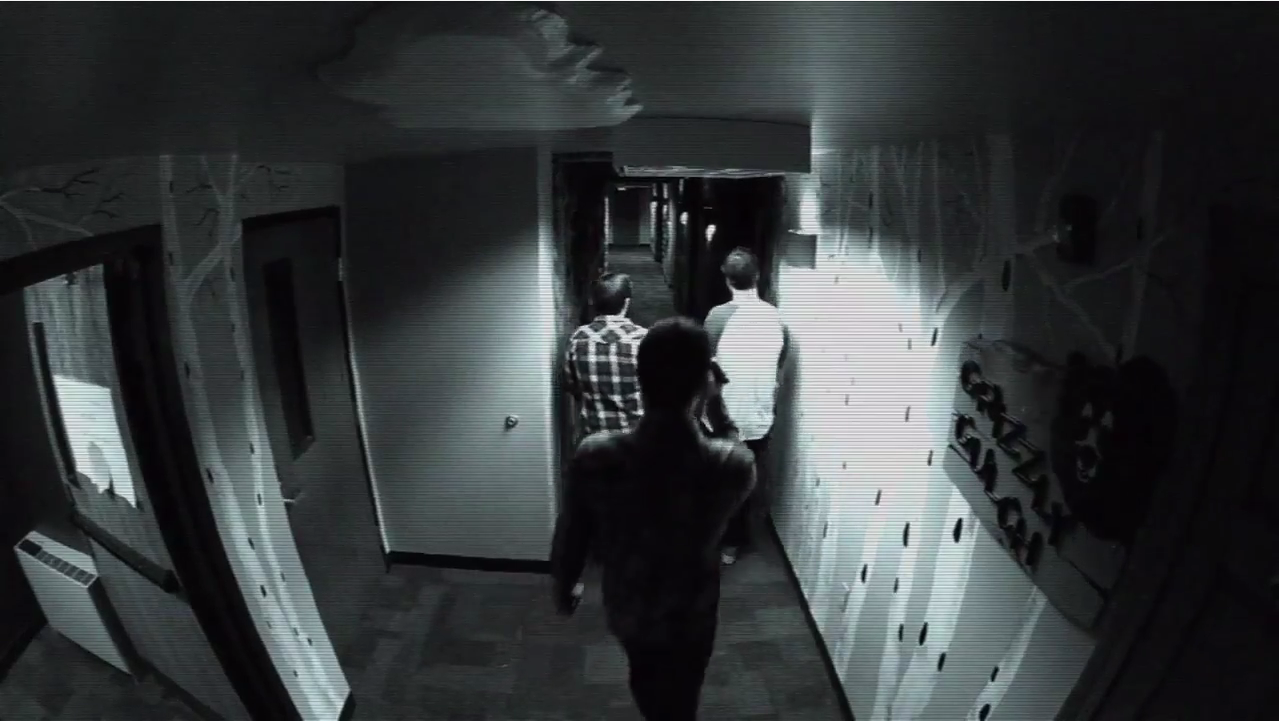


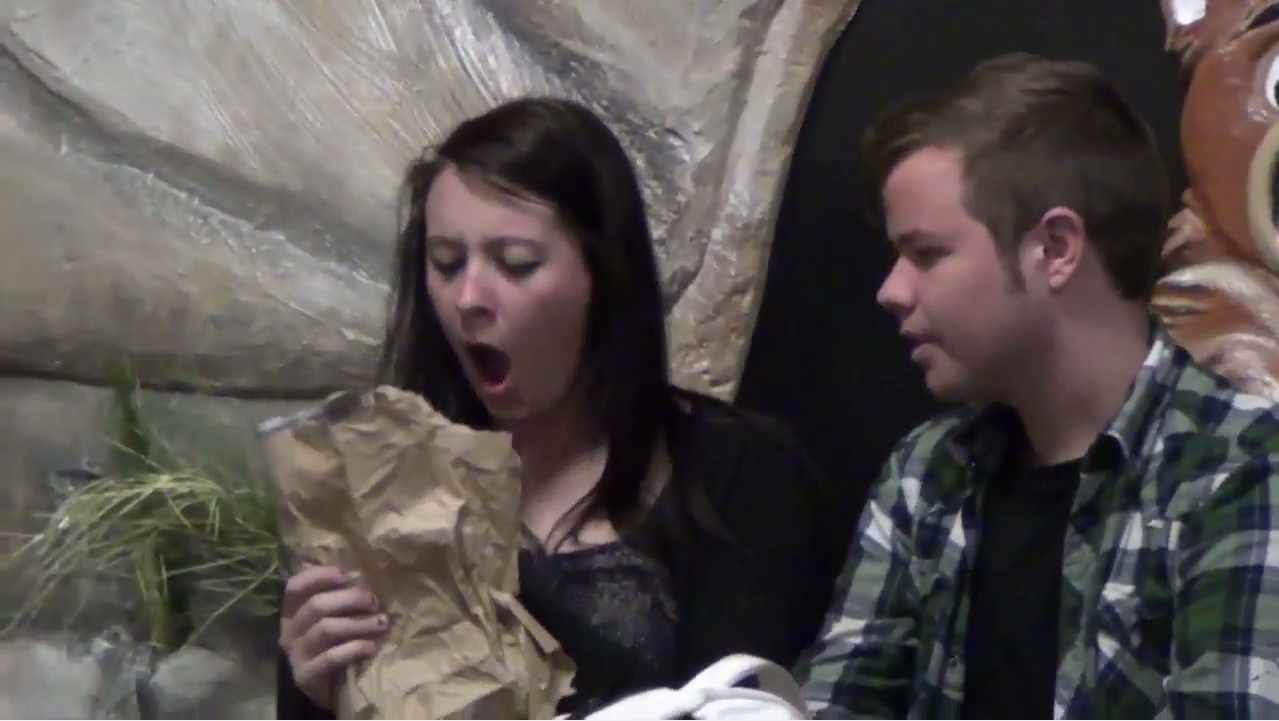
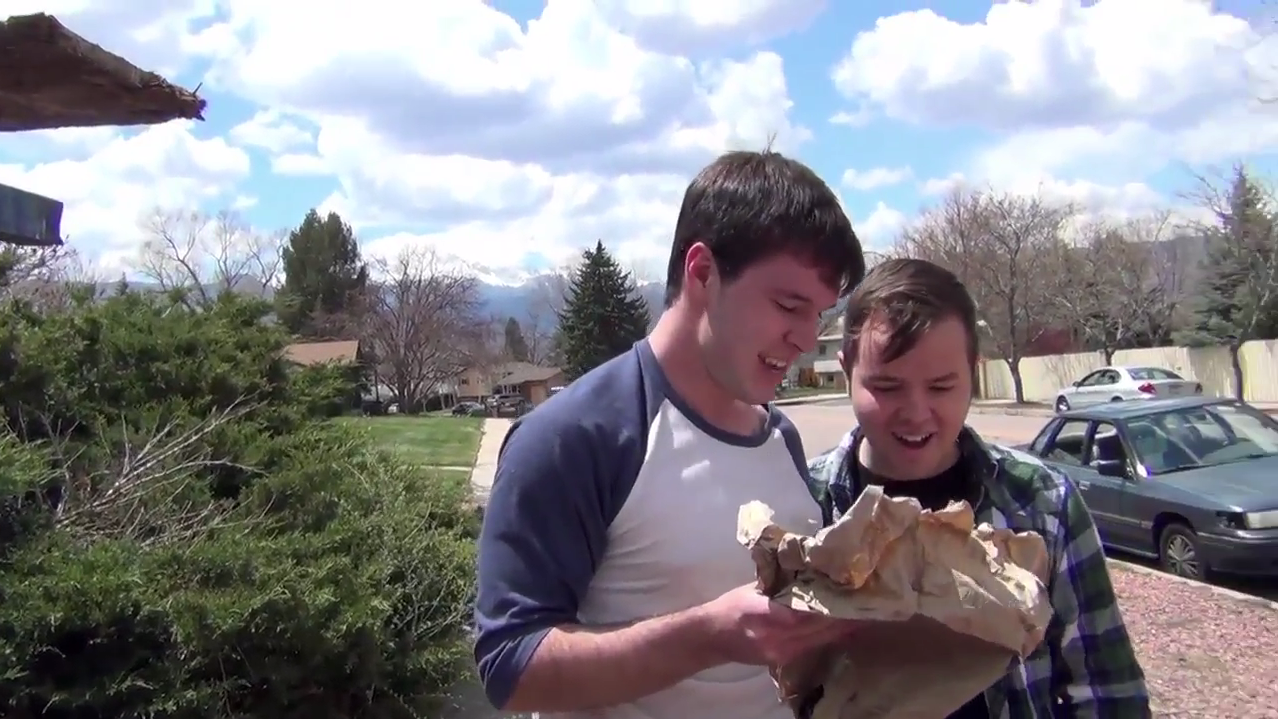
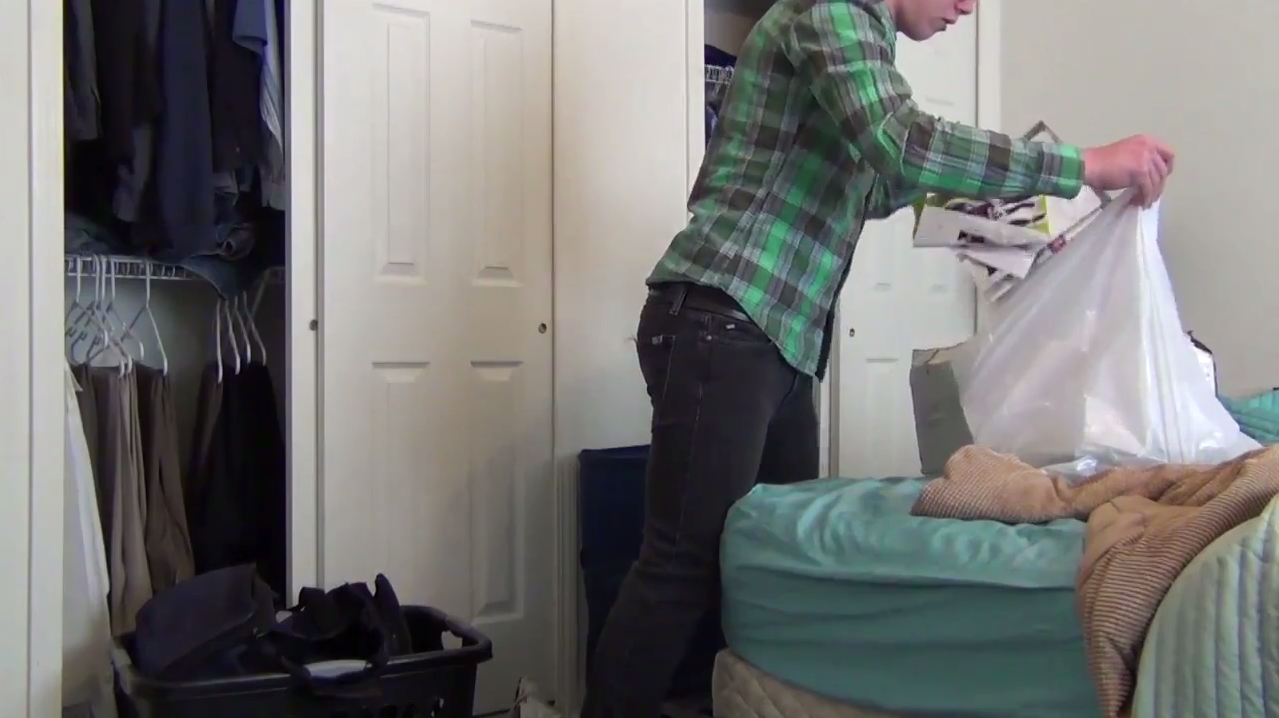
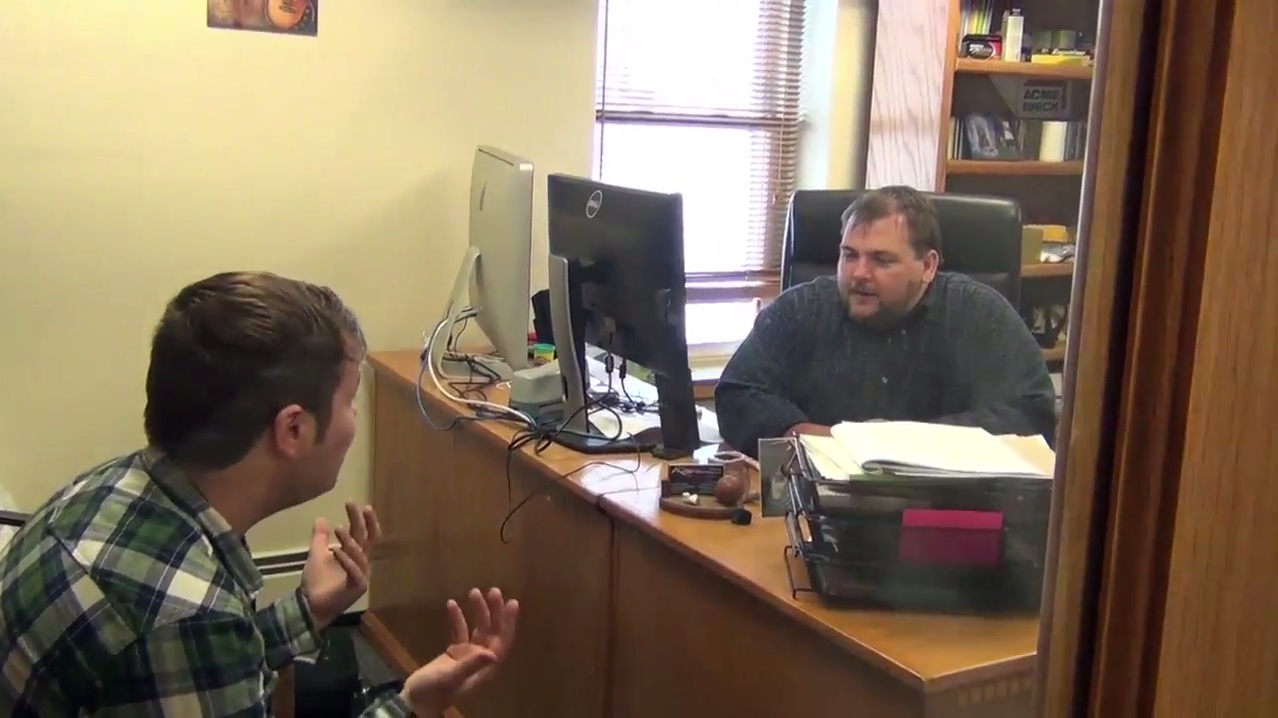
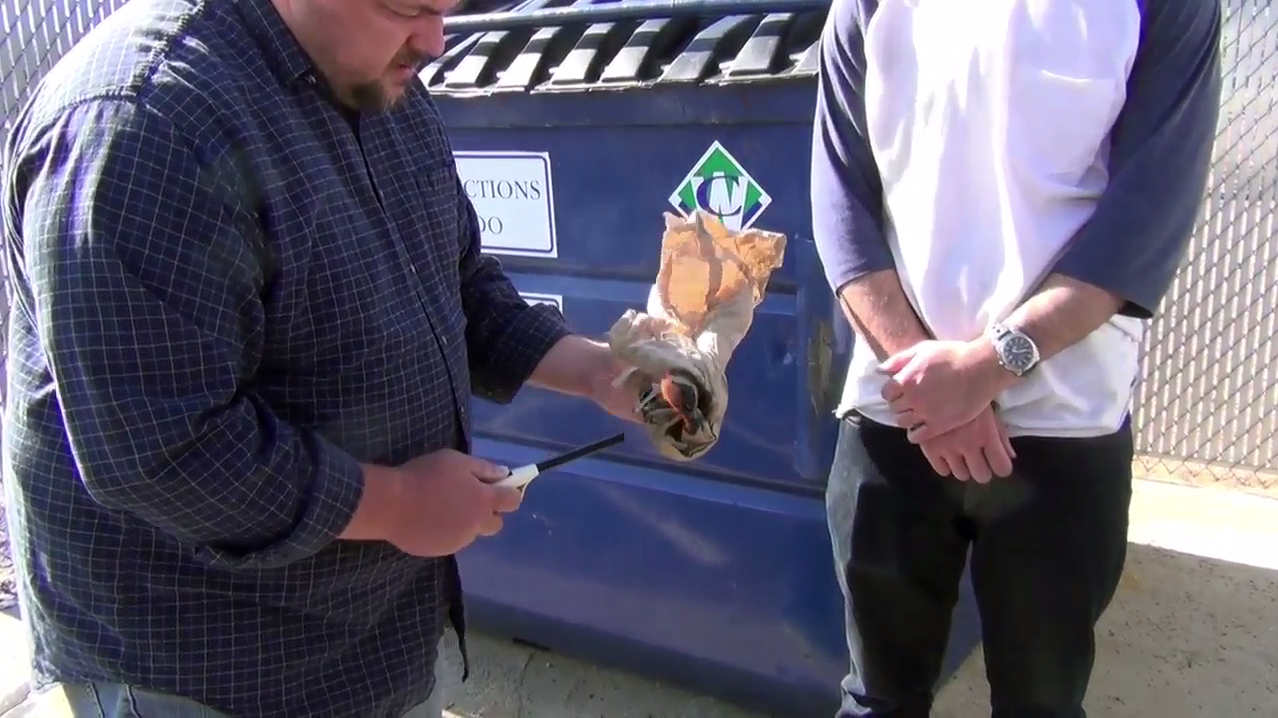
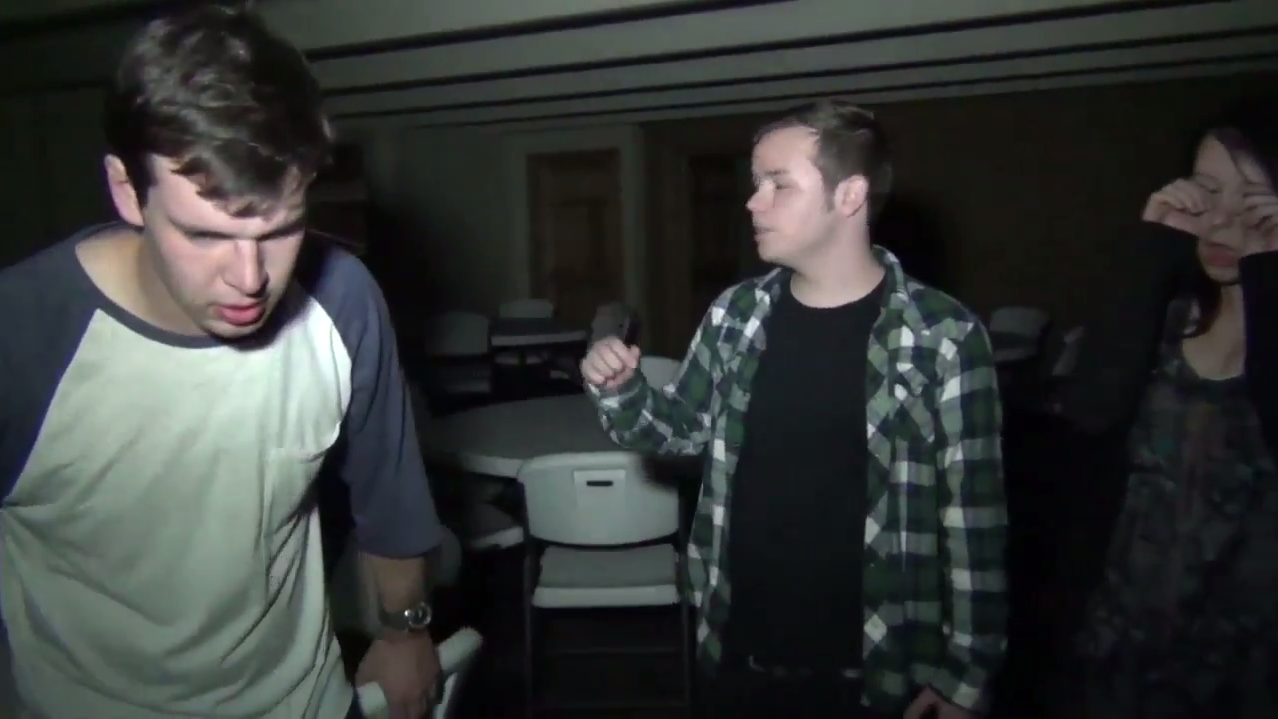
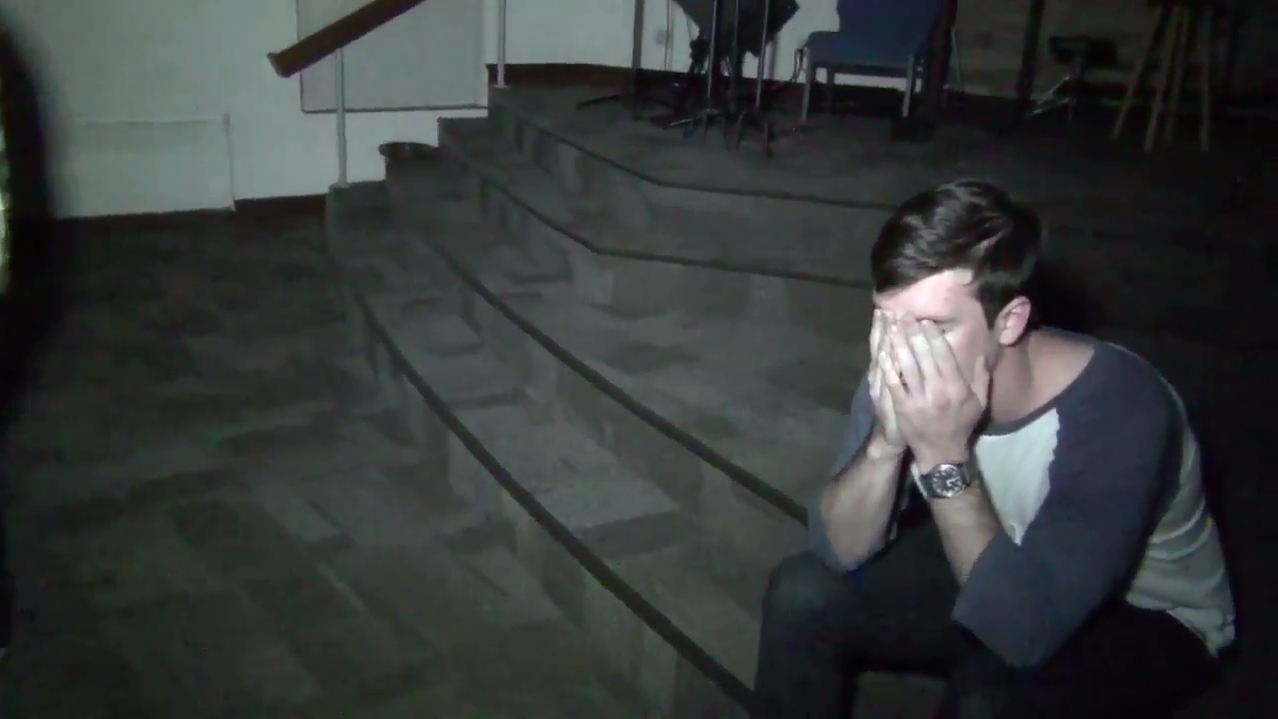
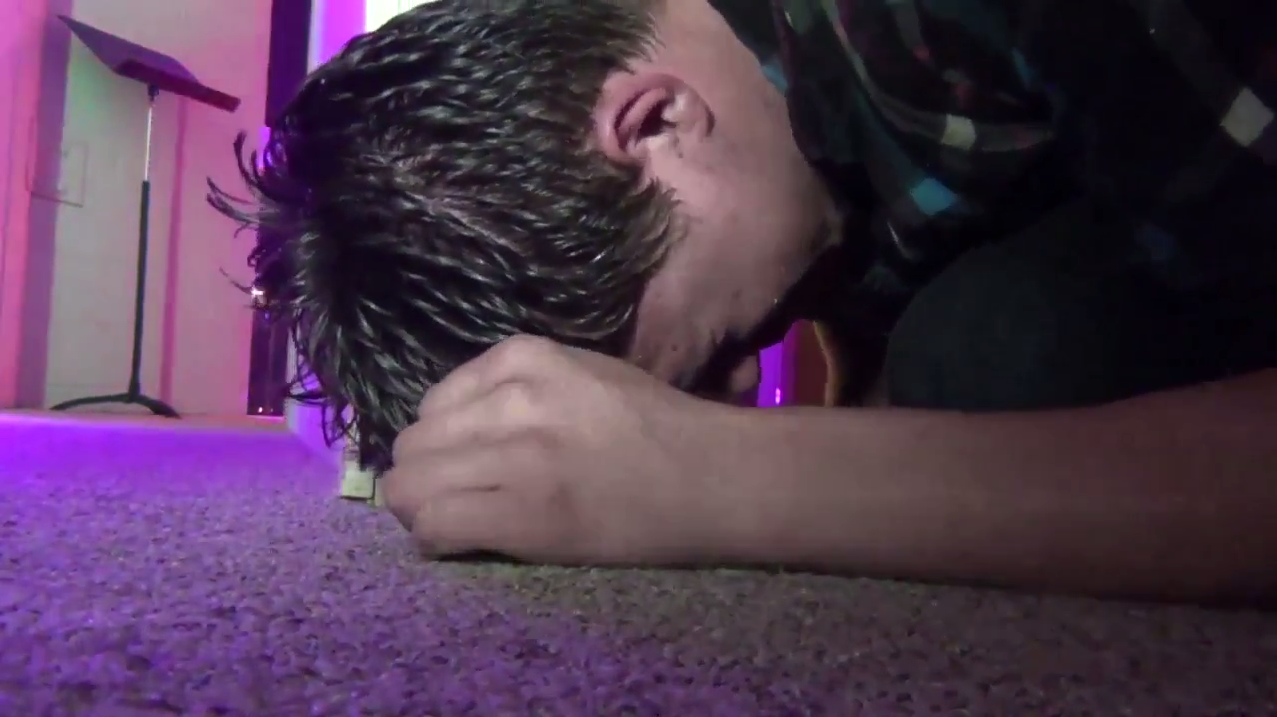
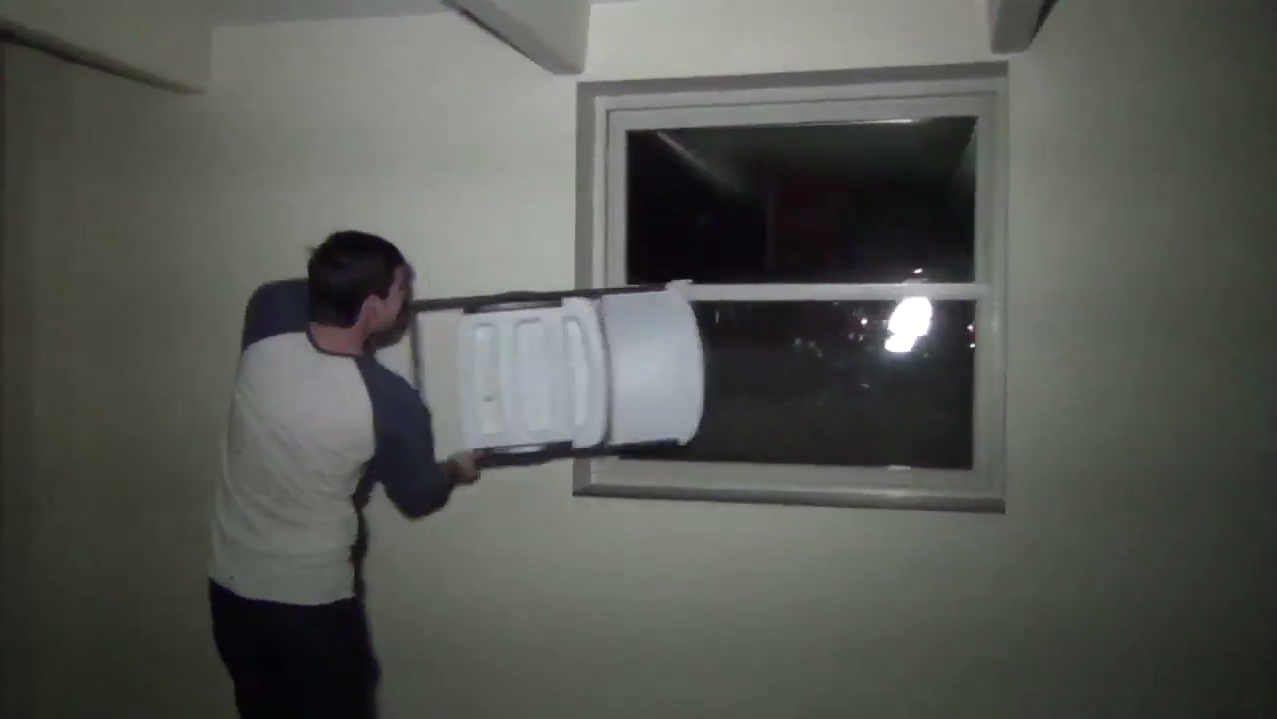
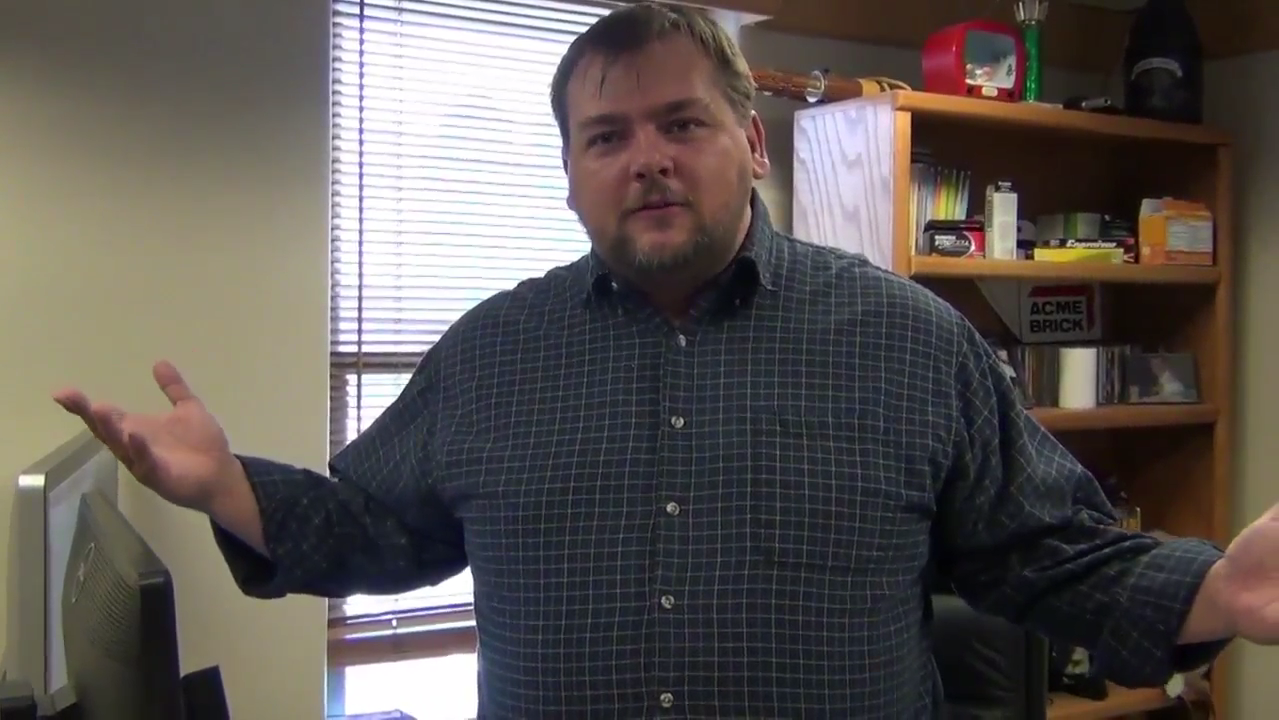
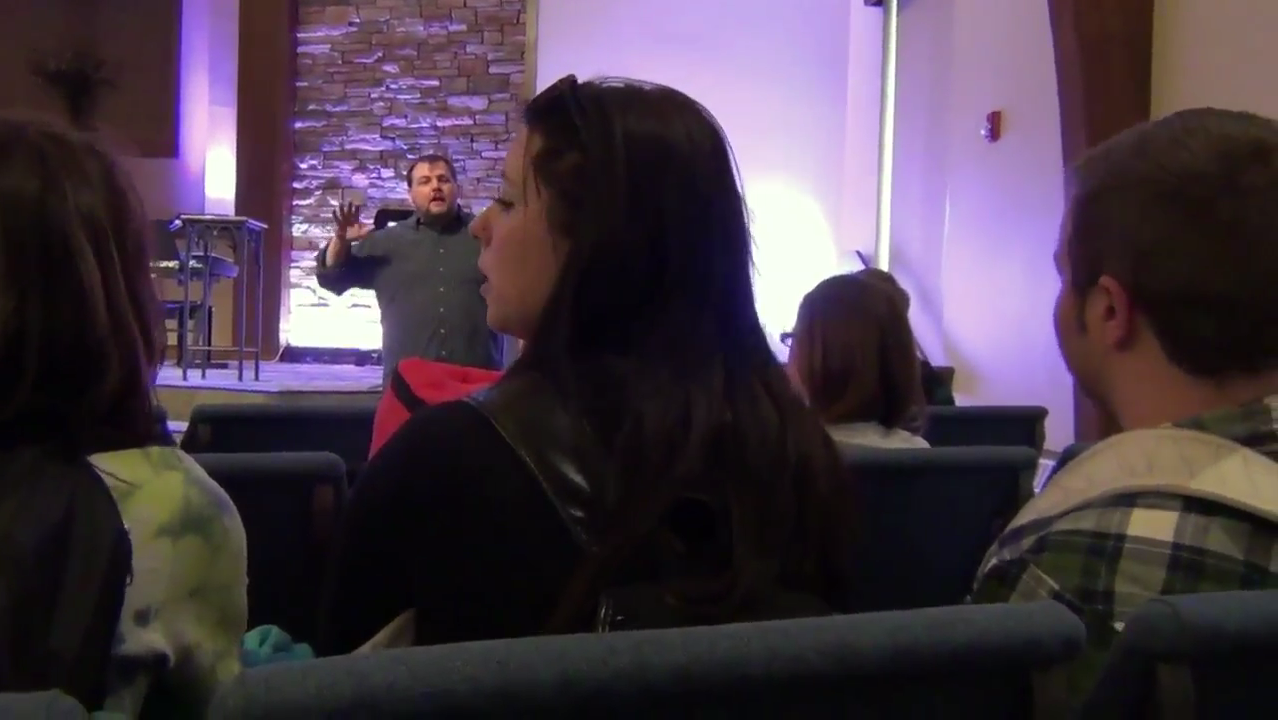
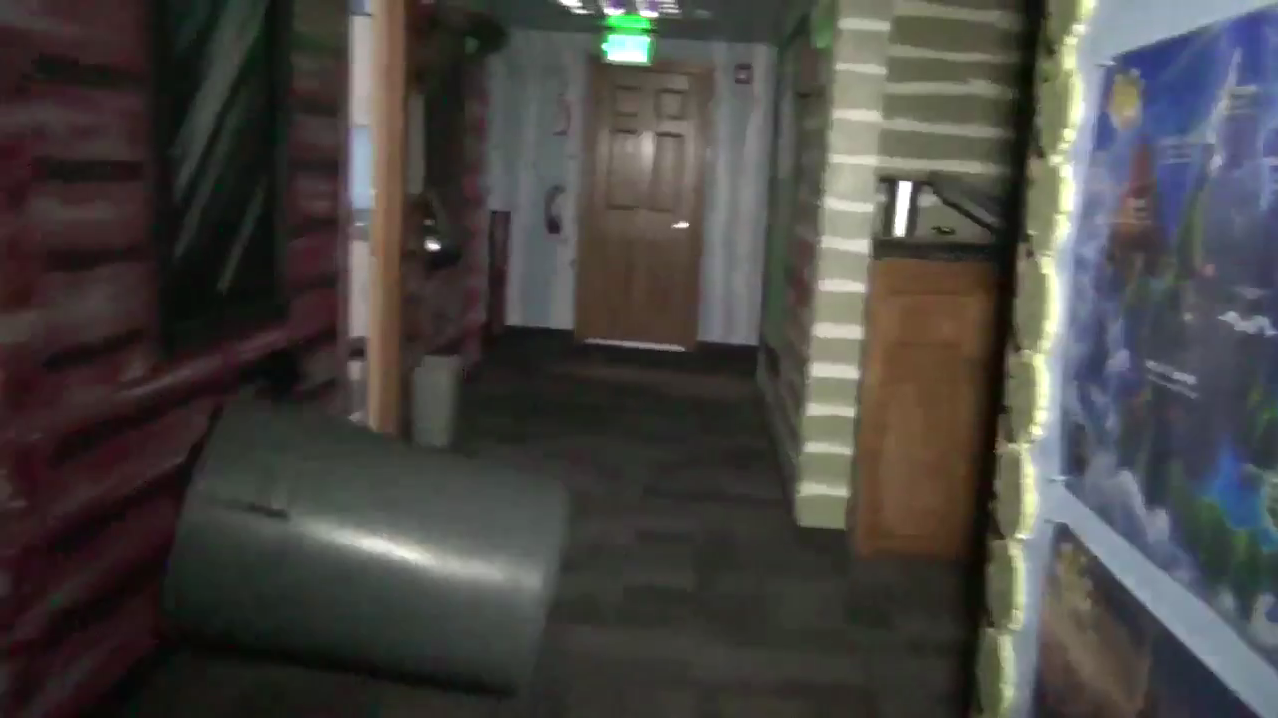

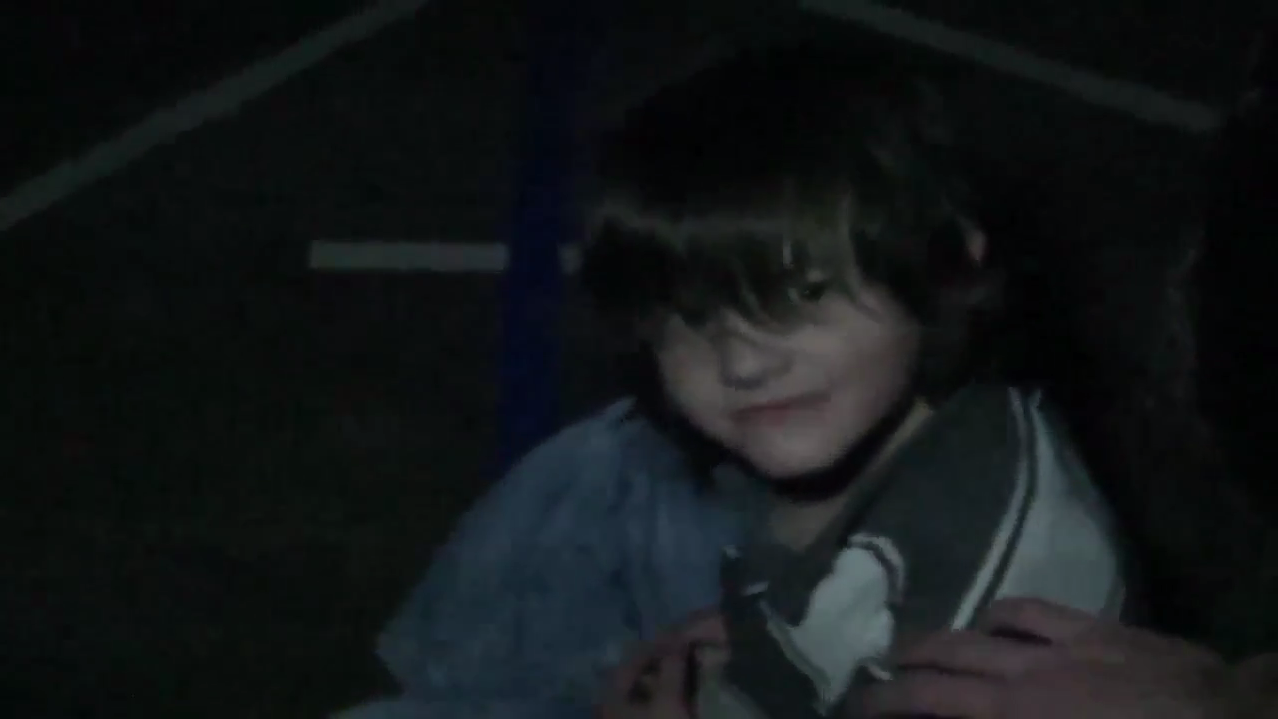

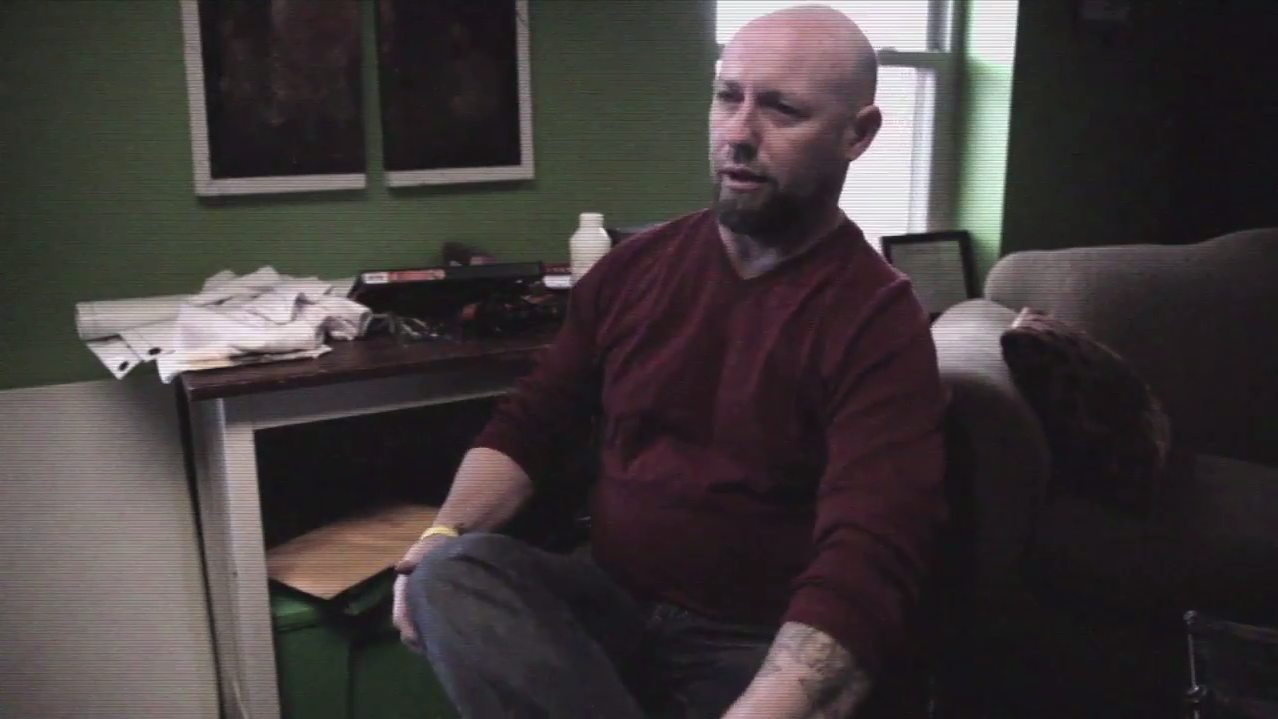
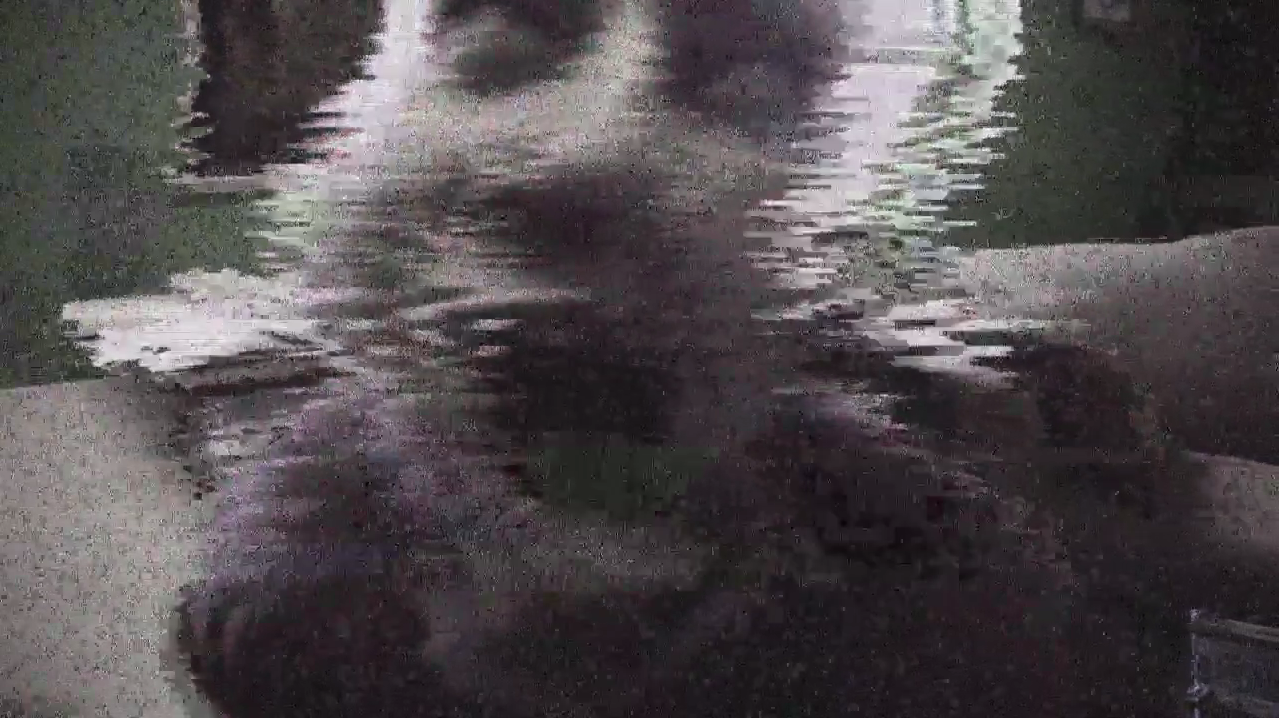

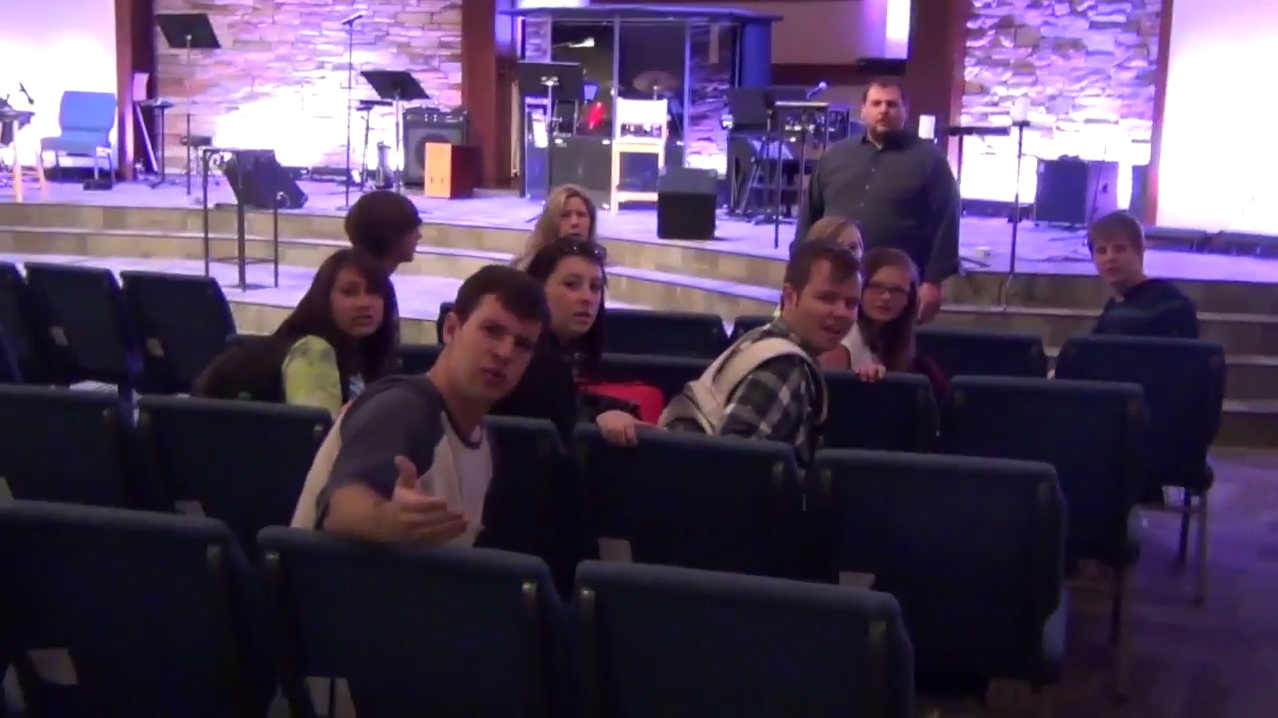
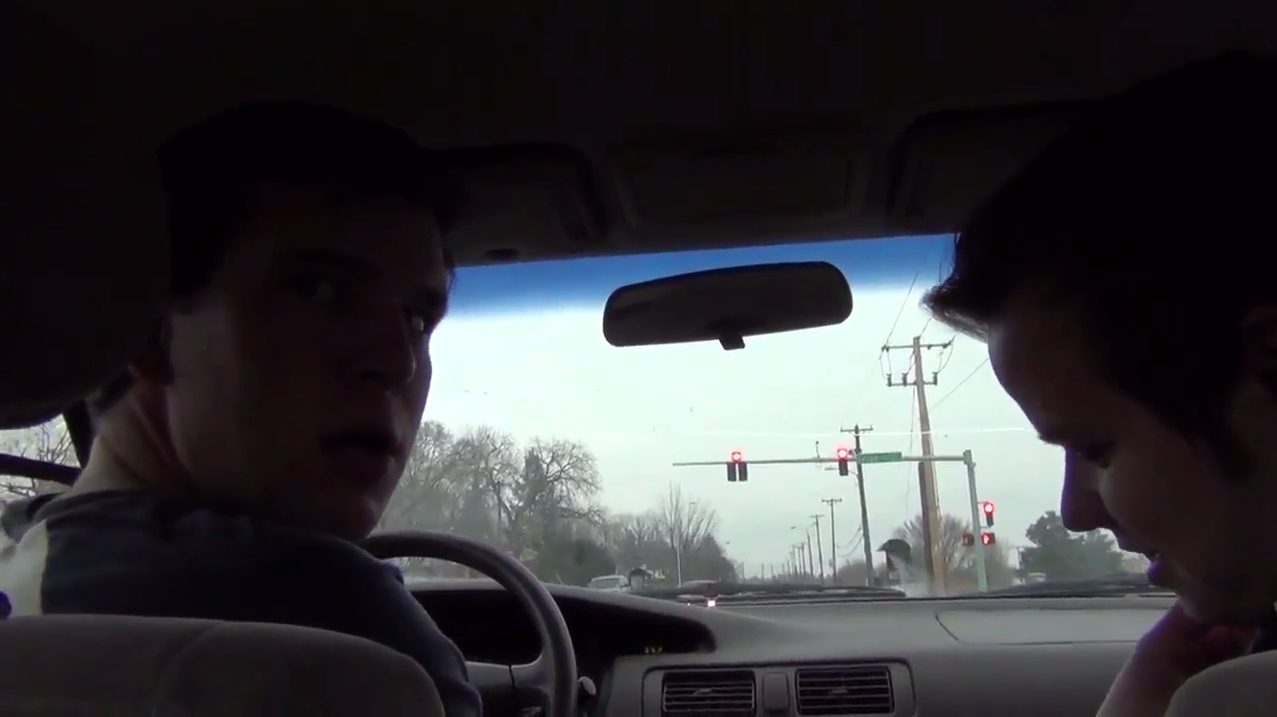
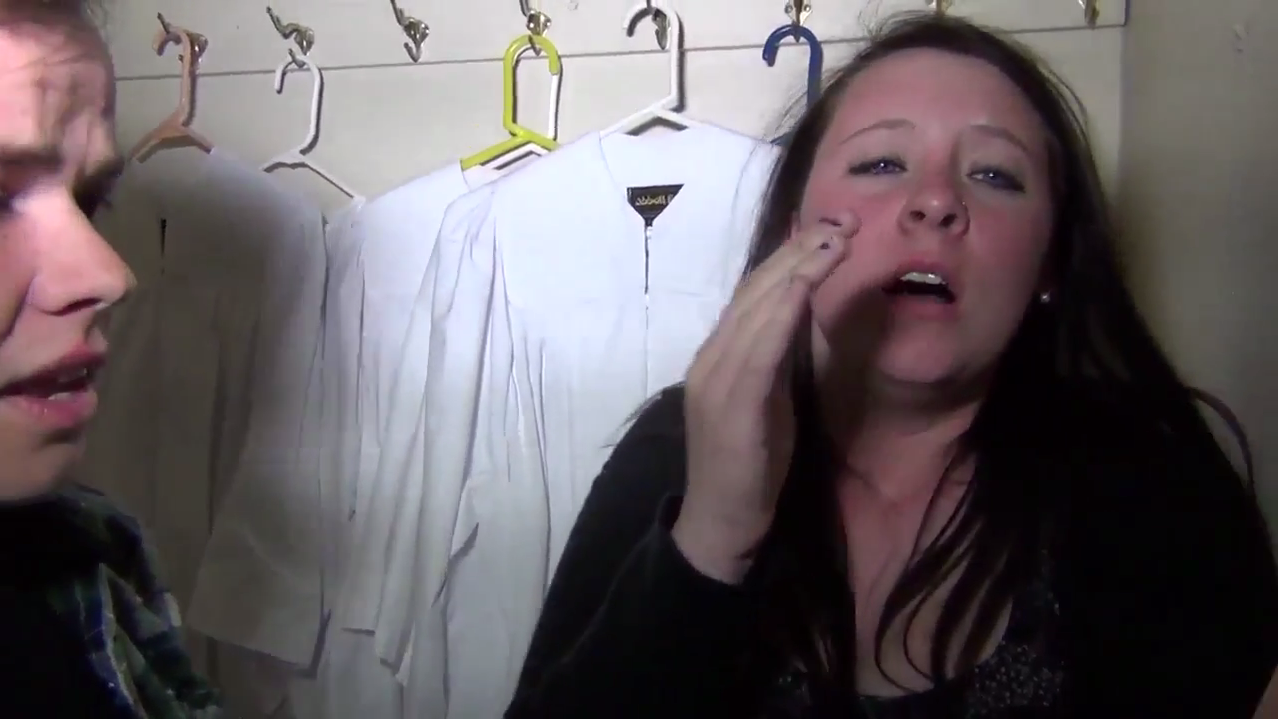
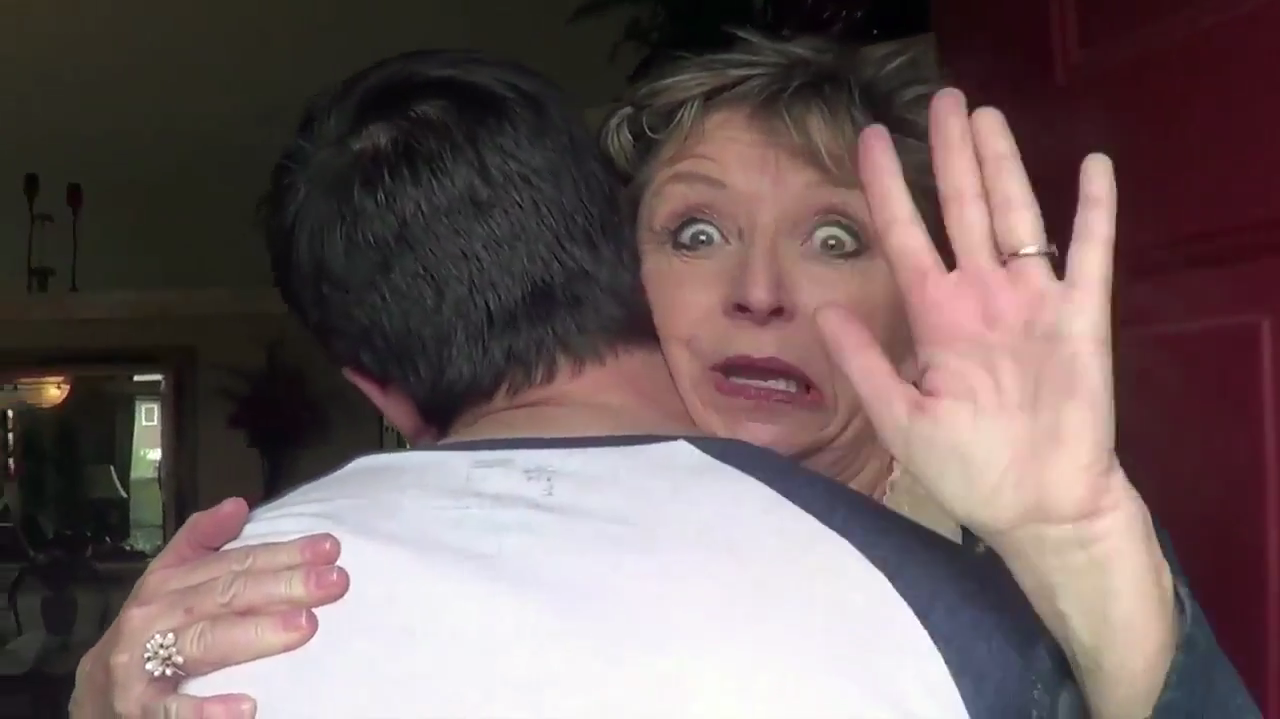
Jesus, Phil (no pun intended). You nailed it (no pun intended).
At first,I thought this piece would be the literary equivalent of shooting fish in a barrel. “See this Christian film? It’s crappy! Surprise!” I don’t know if it still exists, but when I lived in Denver there were a couple of Christian TV channels I could pick up via antenna. One had a show called “Christian Family Theater” that showed films like this one (although usually considerably shorter). Its features were all laughably bad, the kind you’d share with your friends for a good laugh. Unintentional camp of the highest order. They were what you’d expect from a film solely made to preach (rather than to be good).
But your piece here not only explains why The Lock In fails so miserably, it sheds light on what makes horror films work in the first place, which I found fascinating and helpful. The morality/morality gulf concept had never occurred to me before. I feel that by simply mastering its manipulation, I myself could make a horror film masterpiece!
As to some of your other points, I will follow your request at the end and keep my thoughts to myself. (But they’re interesting, damn it!) Overall, as I read your piece, it reminded me of pro wrestling. Audiences have known that pro wrestling is not a legitimately contested sport for almost 100 years. But, as Jim Cornette says, it asks of you to suspend your disbelief, and when you do, you should be watching a fight, and you should care who wins. And it’s the wrestlers themselves who bear the responsibility for this. There must be a fluidity, a believability to their work. The Lock In seems to be the equivalent of where one wrestler throws a drop kick and misses by a foot, and the other wrestler staggers backwards as though he’s been hit by a ton of bricks. It’s OK for a movie not to make real-world sense. But inserting reminders every few minutes that “hey! this doesn’t make sense!” is damnable (no pun intended).
Anyway, I’m trying to make sense and be intelligent, and that is hard for me. I really enjoyed this installment, Phil, and look forward to the next. But now I must make my exodus. No pun intended.
Yeah, I tried really hard to avoid the trap of “let’s all laugh at the people who believe in Skyman.” That’s not clever or interesting. And frankly I’d rather not scare away folks who do believe, or make them uncomfortable, because I’m really interested in what they’d have to say about these movies!
–
No idea if Christian Family Theater is still around, but Praytor (and presumably his actors) are in Colorado Springs. I’m tempted to make a pilgrimage to this church and make it a one-stop sightseeing tour of filming locations.
–
And please, feel free to share your additional thoughts! Unless you just want to say ‘let’s all laugh at the people who believe in Skyman,” in which case…well, you know.
–
Thanks for reading. I’m happy with the film choice this year. They each provide very different opportunities for discussion, and I hope you enjoy the others!
Oh shit, you can tell it’s been a while because I didn’t properly separate my paragraphs. DOY.
In regards to the problematic nature of God filling the role of a horror movie villain–I think you answered your own complaint with the hopes you mentioned earlier in the review for the film “Harmless”. The person addicted to pornography–or anyone committing sin that hurts others–would be the horror villain. That way you retain the innocence needed for all of the victims; which I’d argue is far scarier than being “punished” for anything from having sex to not being present for the children in your charge (see the original “Halloween” or “Friday the 13th”). Plus any Christian horror film could still give you that final scare at the end by reminding you that slavery to sin is still out there searching for victims.
.
Which is my other point–there is a line of reasoning in some Christian circles that each sin is as bad as any other sin. I think there’s a lot of usefulness to the more liberal view that avoiding harming others is a good bright line for behavior (quoth the Zappa: “Whatever you can do to have a good time, let’s get on with it,so long as it doesn’t cause a murder”), but the Christian view is that every sin damages someone. To put it a different way: from the 10 commandments, Moses derived around 600 laws; so every possible sin breaks one of those 10 commandments. I’m not saying this is how Christians think on a case-by-case basis, even if they subscribe to that view. But the predominant Christian focus these days seems (to me) to be personal integrity, so I’m not surprised that a Christian filmmaker chose this as a subject. But it’s obvious that Praytor (could there be a more warrior-like name for a Christian?) wasn’t even able to convince his actors of this line of reasoning, inside or outside of the script.
.
I’d like to believe that the demon in this film could have waited until the teens were watching the interview with the addict to scare them. I suspect that’s what’s intended, though it forgets that the pastor edited the film together.
So Casey, your post got me a-thinkin’ about the challenges inherent in reviewing a Christian movie from a secular viewpoint. The nonsensical level of crappiness in this film’s design and execution adds another challenge to the would-be analyst–“Is this scene inherently ridiculous in its nature, or did they just do a bad job with it?”
–
What I realized as I read your post over is that, given his target audience, Praytor (I AM PRAY-TOR… DESTROYER OF EVIL) made two good choices:
–
1) Pornography as the evil-loosening Pandora’s Box is very well chosen. The Exorcist had a discovered amulet, which was scary, because yeah, who woulda thunk it would unleash such horrors a continent away? At the same time, what are the odds that you or I would ever encounter such a thing in our everyday lives? Pornography, on the other hand… that’s EVERYWHERE. (Even in boxes inside dumpsters, apparently.) You know that for you or a friend to stumble across it like this is something that could actually happen–to you!!!! I guess my point here is that, regardless of where one stands on the hierarchy of sin issue (in my opinion, capriciousness is by far the worst), the sin of pornography works well in the context of such a film.
–
2) Having a demon be the primary antagonist should be effective because we instinctively know that evil supernatural beings are scary. A guy possessed by a demon is a scary thought, but then the demon is limited by the abilities of the possessed… and what if he doesn’t even lift? I realize now I’m abandoning the whole psychology-of-horror thing in favor of championing a rampaging antagonist who just destroys everyone. But maybe it would be effective in a Christian movie…? (“Hey, demons just want to destroy Christians. That’s ME!!!”)
–
Upon further reflection, I realize I’ve strayed 180 degrees from Phil’s excellent observation, the same one I lauded in my earlier post, re: how such a film should manipulate the issue of morality to best effect. I guess I’m rethinking the necessity of the whole “punishments coming from God” thing. I think a more rudimentary “pornography is detestable and is the vehicle of choice for demons; demons are evil; here’s a demon unleashed inside a church, kicking ass like a pro; JEEZ, how horrifying!!!” approach would work if executed properly. It’s SCARY and it’s RELATABLE. The morality issue will be largely resolved when the God side wins in the end. The victims won’t be destroyed; they’ll just have a scary-as-hell close call that reinforces why God is so on-point on the whole pornography issue.
–
Full disclosure: my brain hasn’t been firing on all cylinders lately, so I may be missing everyone’s points and then some. Also, I’m presently writing a musical re: the Book of Job, in which Job experiences unspeakable suffering, not as a matter of justice, but simply so he can exemplify the virtue of unwavering allegiance to God. So, when considering biblical morality, I may be seeing the world through selective lenses.
–
(Such fun! Thanks again to Phil for this thought-provoking piece.)
Your mention of Job and having demons be antagonists makes me think: God allowing Satan to directly attack people (Job 1:12 & John 19:11) could become that necessary scene that every horror movie has where they have to explicitly say the phones are dead/there’s no cell coverage.
Haha, Casey, it took me a while to get what you were saying. Like, some kid could be cowering in a closet, saying, “At least I know everything will work out on the end, because God is in my corner!” Then she thinks for a second and says, “Oh crap, unless this is one of those times…”–akin to “At least I can call 911… oh, crap…”
>You know that for you or a friend to stumble across it like this is something that could actually happen–to you!!!!
–
I almost raised this point in the article, but since it was already longer than the dictionary I figured I should stop talking. I personally think that the “evils of pornography” thing falls at the first hurdle. You’re correct that it’s everywhere, and I agree that it seems like it should be an effective touchpoint, but…doesn’t the scare tactic fall apart the moment someone looks at pornography and DOESN’T let loose a demon? And considering that pornography is everywhere…won’t most people conclusively know that pictures of naked ladies are not conduits to hell?
–
Especially if The Great and Powerful Pray-Tor intends to reach those who are already into pornography. They aren’t being chased around by demons, so how is this meant to convince them otherwise?
–
It seems odd to take something that’s provably, demonstrably false, and structure your sermon around it. They should at least have chosen something open to debate.
–
For example, “In my father’s house are many mansions” is the kind of thing nobody can prove or disprove, so we either believe or we don’t. Fine. But “On Oak Street there are many mansions” doesn’t work that way. We can check out Oak Street for ourselves. Belief doesn’t factor into it, and shouldn’t, because we can waltz on over there and make a definitive assessment of that statement’s truth.
–
Praytor directs us straight to Oak Street. We can open a porno mag and instantly prove him wrong. For a horror film, that doesn’t necessarily interfere with our enjoyment. But for a Christian film, it absolutely interferes with its proselytizing.
–
I definitely think Harmless was the better concept for reasons I mentioned above (and for reasons which commenters have mentioned here), alongside the fact that the damage seemed to be done to the sinner’s family, as opposed to the sinner. I think that’s a much more convincing scare tactic.
–
Really enjoying the comments, by the way. I hope my next two installments are worthy of more.
I’d argue (actually, I could stop the sentence there, because it’s always true) that there are two issues. One is whether this movie makes any sense, internally or otherwise, with regards to what it sets out to do. (In short, is it, in any defendable sense, a good movie?) The other is whether it would be effective during a single sitting for its target audience who has switched its analytical mind to “off” for the purposes of some mindless entertainment, presumably in the form of fright. I think your points are directed toward the first, and mine toward the second. Which means we’re BOTH right, everyone wins, and there should be Twixt bars in it somewhere for us both.
–
Some movies I’ve enjoyed immensely only to realize the next day (or even during the ride home), “Hey, that sucked!” Other movies I didn’t particularly care for, but they provoked several days’ worth of thought.
–
I saw the play “Our Town” for the first time the other night. I cannot bring myself to say that any 3 act play that uses the 3rd act to justify the dreariness of the first two acts is actually a good play. But it was an interesting and thought-provoking experience nonetheless.
–
So what am I saying? I’m saying that Praytor, much like Thornton Wilder, operated in a shadowy in-between of subtleties, where the mundane is elevated to the sublime, and where random filmmaking choices evolve within a single movie into artistry of the first order. I guess what I’m really saying is that Rich Praytor has, raging blindly, crashed his way into the top echelon of filmmakers, redefining genius for generations to come. If not the Mozart of Christian horror films, he is at least a Faure, or, if you prefer, a Borges loosely translated into Hungarian.
–
Very much looking forward to the next installment. Don’t be too proud to remind me when you post it, because my memory has turned to shit.